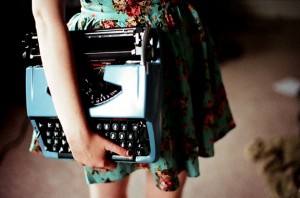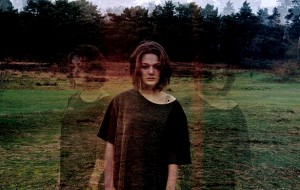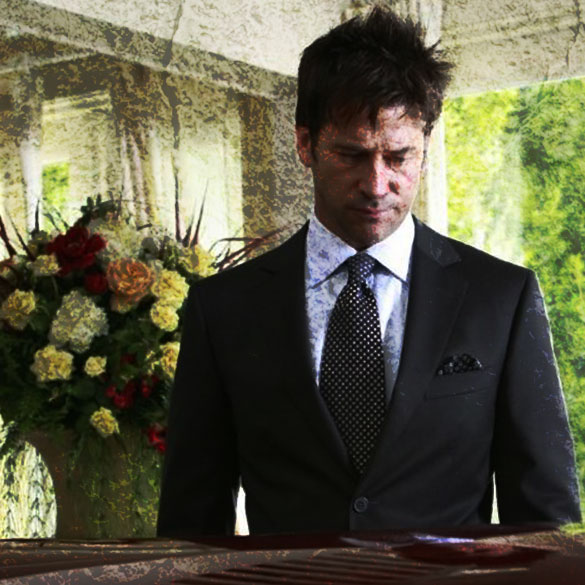If you’ve ever used the word “modern” in conversation and found that your interlocutor isn’t exactly sure of your meaning, you shouldn’t feel bad. The infamous word has been reinvented over and over, from Back to the Future movies to the Renaissance. Yes, the Renaissance. As your dictionary has it, definition 1: “characteristic of a present and recent time,” AND the unlikely definition 3: “of or pertaining to the historical period following the Middle Ages.” Really, the Middle Ages? How modern.
The guilty word itself (“moderne!”) has its roots in Middle French and is best translated as “lately.” But the problem with pinning down lately is that she keeps changing—every, single year.
The oft-quoted academic’s phrase, “What do you mean by modern?” gains new light when we stop to ponder all these different meanings of “modern.” Contemporary is the less ambiguous word choice and possibly preferable: it implies that we’re talking current events and current people whereas modern can refer to anything from the 10s to the 1950s depending on the subject at hand (or, even the Renaissance, apparently).
Yet for all the ambiguousness of modernity, it’s apparently in vogue: I read in my local newspaper that “modern” has never been more in fashion than right here, right now. Looking at modern’s recent history (in the grand scheme of things), it seems possible that its popularity is peaking now: there were the somewhat space-like designs of 1950s Cadillacs, then the geometric prints and angled bobs and pixie cuts of the 60s (probably not Eve’s hair back in the Garden of Eden). The 70s, however, had a decidedly nostalgic feel with the button up blouses and traditional, long hair (though how could the 70s not be a bit anti-modern when they were a response to the mood of the two previous decades?[1]). The 80s returns to the modernity pattern with more geometric prints, and the additions of neon and “future”-themed movies. The 90s receive the Internet and the 00s get Lady Gaga with her decidedly space-age ensembles—and then we are catapulted into the present, where with every sort of electronic apparatus you can imagine, we are somehow even more modern than ever.
Yet there’s a strange hitch to it all. Something that makes you look twice before you call modern society “modern”: we’re also a little obsessed with the past.
Another list is in order, starting with fashion: high-waisted everything, macramé, lace, feminine prints in; farming—WWOOF and local food taking the country by storm; Vogue Knitting, old cars and home-gardens; the widespread popularity of folk music and Americana. We rather make the 1850s potato farmer look like a modern NYC artist.
Yet the vogue farmer selling peaches, cherries and aragula and playing his banjo in the evenings seems to again fade and obscure when one hears the experts say that farming is no longer financially viable, sustainable, profitable, break-even-able, even. Modern rears her ugly head and the fight ensues between the sentimental, precious notions of local-everything and the profitability trump card of this economy-driven world. The battle yields odd creations such as Whole Foods, which prompts the question: but I thought “organic,” and “local” foods weren’t profitable…?
We certainly don’t have all the clear-cut simplicity of Modern’s fetishized old-fashioned farming world.
And in the end there’s no clear winner between Modern and Nostalgia. It seems the only sure thing is that we are in the ever-confusing, and oft unsatisfying present. By way of example, see Woody Allen’s “Midnight in Paris,” where to Owen Wilson, modern-day Paris is a but beauty’s shadow compared to the expat-age of the 20s. Then, suddenly his flapper/fashion-designer friend Marion Cotillard reveals that the 1920s are quite boring, and the best time to live was “La Belle Epoque.”
For Marion and Owen and all the rest of us, nostalgia is a short road to nowhere. Despite the film’s commentary on nostalgia’s circularity, Woody Allen’s name alone incites nostalgia. His films aren’t passé, certainly are not modern. They’re nostalgic. His attention to the past proves his old-fashioned appeal, and his viewers perpetuate the regime of remembering by buying tickets and basking further in the nostalgia trend.
The box office numbers (along with our fashion and everything else) show us that we feel modern times to be boring and hope nostalgia will make us happy. That, maybe, if we just try hard enough to make our lives a blast from the past with our movies, clothing and food, we’ll start to feel the simple joy we associate with yesteryear.
So were we ever truly into “modern”? Woody Allen and hipsters everywhere suggest that we always thought the grass was greener on the other side of yesterday, and the rest of the subculture agrees. Amongst said subculture, (or perhaps, less sub and more supra) there are a confusing plethora of types. My roommate, as we defined her, “an intellectual hippy with doses of irony and an inclusive attitude to less ‘cool’ persons (“whatever that means,” as my current roommate says)” is an example of how infinitely different the “different” can be.
The differentness of the “different,” however, might be the key to a fierce, hidden Modern lurking in Nostalgia’s clothing. That fact that America’s subculture types are so diverse (sending neat categories of “hipster and indie” into scategories) implies they are not so old-fashioned. The fact of so much diversity (even among subcultures) living in close proximity suggests a more modern and accepting world—maybe even a truly Modern one.
But this distinction makes the subculture situation rather paradoxical. While the “differents” are so diverse they are also scathingly anti-“modern.” In other words, they outwardly (on the surface at least) reject the modern notions of materialism, the traditional nine to five career path (evoking the farmers again) and being too plugged in (note lower or absent facebook use).” This definitely sounds like another point for Nostalgia.
It’s just not clear if American subculture is modern or not. The inconsistency warrants a look at the mainstream youth population, to see how modern fares amongst the culture at large. With the remaining frats, preps and popular kids’, modernity is fresh and fast in terms of materialism. Shiny cars, designer jeans and expensive gadgets are just as in as ever in certain crowds. (Back on the flip side: dare I mention the hipster crowd may appear to be in rags, but often has mom and dad helping to fill out that Brooklyn apartment and not-actually-from-Goodwill wardrobe). But these popular kids seem a bit outdated. For instance, even Gossip Girl (as mainstream as it gets) features offbeat clothing and fairly obscure music in every episode, as well as their own resident “hipster” of the Upper West Side, the well-read NYU writer, Dan Humphreys. All the discrepancies and overlaps between shiny/new and meaningful/old make us wonder: are we living in an increasingly old-fashioned world or just a nostalgic façade built in tribute to America’s money god? It’s just hard to tell whether Dan Humphreys really does believe in few possessions and that romanticized struggling artist’s life—or if he’s just pretending to in his Marc Jacobs.
The one measly argument for explicit Modernity among us remains: we don’t seem to have as much homogeneity as any other time. Or in other words, we don’t have much in common, yet we’ve no Civil Wars—that’s got to be modern, right? The widespread information availability that smart phones and Wifi provide may make us feel that we have a shred of common ground, because it allows us to find other similar subcultures to our own, but in reality, just walking in a public place in a moderately sized town will break down that fourth wall of the internet that prevents us from witnessing the community at large in all it’s hodge-podge collage of diversity.
What we really are: modern (contemporary) people with nostalgic tendencies (boredom) will probably keep turning our heads. Just like all those other moderns of the Roaring Twenties, La Belle Epoque, The Renaissaince, it goes on




